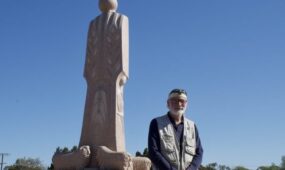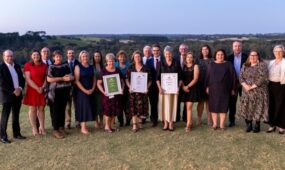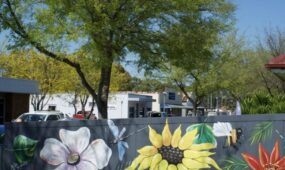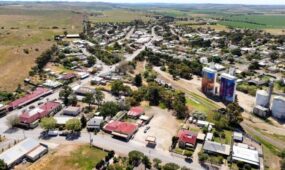Ancient fossils showcased in SA's newest park
Regional
Nilpena Ediacara National Park in the Flinders Ranges officially opens today, with its centrepiece blacksmith shop housing a state-of-the-art 3D animation experience telling the story of one of the world’s most significant fossil sites some 550 million years in the making.

Sign up to receive notifications about new stories in this category.
Thank you for subscribing to story notifications.
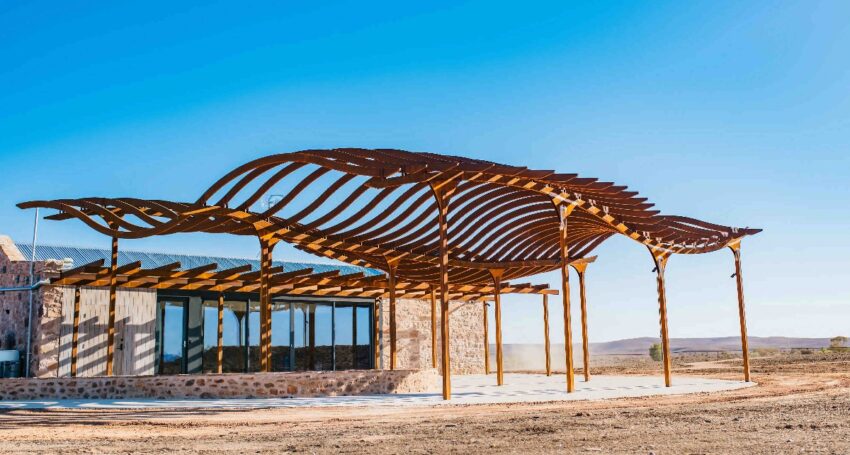
A unique steel installation reflecting the form of the ancient sea bed and ripple rocks where the Ediacara fossils were first discovered rises alongside the stone visitor centre 500 kilometres north of Adelaide in the Flinders Ranges.
Visitors can now join pre-booked, guided tours of the world’s most comprehensive record of Ediacara fossils and the first multi-cellular creatures that ate, hunted, moved and sexually reproduced.
It takes in the Ediacara Hills and 60,000-hectares of the former Nilpena Pastoral lease.
An ancient seafloor containing early lifeforms, up to half a billion years old, is preserved in fine sandstone grain in the state’s outback.
Alongside it are culturally significant ceremonial sites, middens along creek beds and meeting places of significance to the Adnyamathanha people, as well as a snapshot of the state’s pastoral history, creating another jewel in the Flinders Ranges crown.
Stone buildings, including a shearing shed, shearers’ quarters and blacksmith’s shop, all now meticulously restored, bring together history and modern-day with an audio-visual experience that recreates the ancient ocean floor.
Hosking Willis Architects worked on restoring the old buildings and creating a visitor centre with its rusted steel pergola echoing the natural colours, textures and forms of the ancient landscape.
“As you approach through the undulating landscape the structure rises out of the earth and draws visitors to the site, linking the 100-year-old blacksmith’s shop to the 550-million-year-old fossil beds,” Sam Hosking said.
A fossil bed referred to as Alice’s Restaurant Bed, named after the 1960s Arlo Guthrie song that notes it has ‘everything you could ever want’, provides the basis for palaeontologists and those keen to learn and admire.
Renowned South Australian geologist Reg Sprigg first discovered the Ediacara Hills 75 years ago, the first time an entire community of soft-bodied creatures had been found in such numbers anywhere in the world.
Almost 40 years later, in the 1980s, south of Sprigg’s original find, pastoralist Ross Fargher made a discovery of Ediacaran fossils on Nilpena Station when a family friend noticed the floor of the Nilpena wool shed featured ripple rocks alike the ancient sea bed.
As a custodian and passionate ambassador, Ross has been instrumental in the development of the national park alongside the family pastoral property.
“The opening of the park is a culmination of many years of deliberation and negotiations for the best outcome for the protection of this incredible site of global significance on our Nilpena Cattle Station, demonstrating best preservation of evidence of the earliest forms of animal life on the planet,” he said.
“Nilpena Fossil Field is the key site among a series of sites throughout the Flinders that represent the story of the dawn of animal life.
“While there are other places in the world that have parts of the story, and places also with extraordinary fossils, the Flinders record is reputed as unparalleled and an accessible location for visitation and ongoing research.”

A fossil from Nilpena. Photo: Robert Lang


